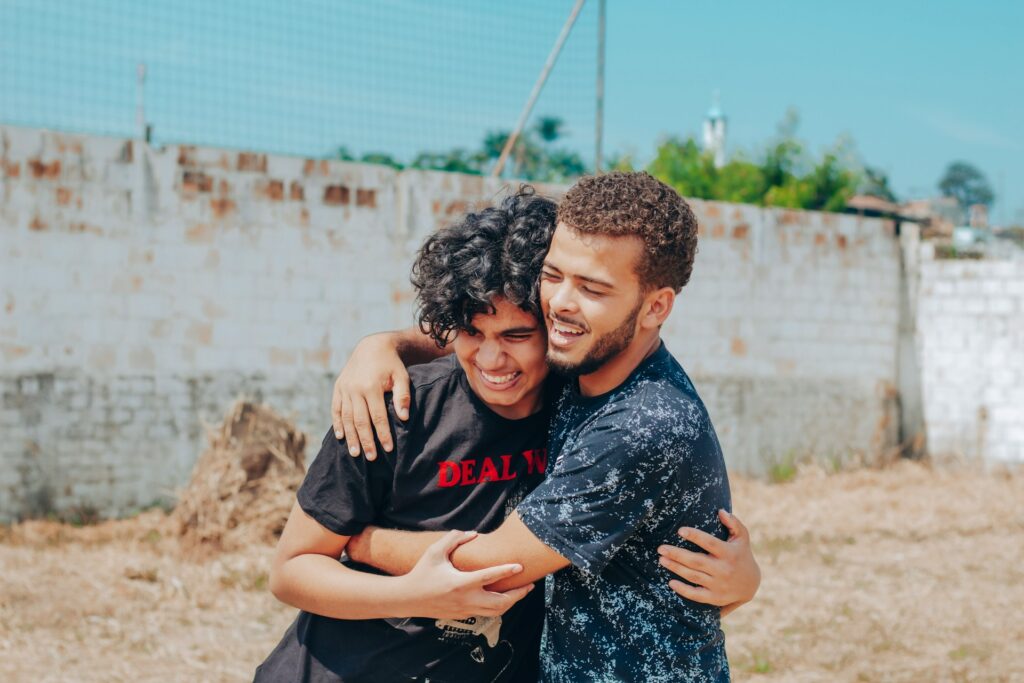Peer Pressure and Substance Abuse: What Teens Hide and Adults Miss

Teens often appear confident on the outside, yet their inner world moves fast and reacts strongly to social cues, expectations, and hidden pressures. This makes peer pressure and substance abuse far more complicated than simple “bad choices.” Support from a place like Tranquility Recovery Center gives families hope because compassionate care helps teens feel understood instead of judged. This topic matters deeply because adolescents face constant social evaluation, digital exposure, and emotional overload that adults often underestimate. Many of the forces shaping their decisions operate quietly, which raises the risk for peer pressure drug abuse, peer pressure substance abuse, and situations where teens experiment without fully knowing why.
Why Do Teens Fail To Recognize Early Social Pressures That Shape Their Behavior?
Teens rarely realize how subtle cues guide their choices. Inpatient detox San Fernando Valley works with adolescents who describe moments where no one asked them to use substances, yet the entire group atmosphere made refusal feel unnatural. Research showing that 70% of adolescent risk-taking occurs in front of peers helps explain why ventral striatum activation increases reward sensitivity under observation. Laughter, silence, trend-following, and group energy shift the emotional landscape so quickly that teens interpret it as normal rather than pressure.

This makes peer pressure and drug use hard for parents to detect because the influence looks harmless. When small behaviors stack up, a teen may join in to avoid feeling out of sync. It seems easier to follow the group than to become the only person standing out. This hidden dynamic becomes a setup for peer pressure and drinking that starts long before anyone hands a teen a substance.
How Small Social Cues Push Teens Toward Bigger Risks
Teens react strongly to small group signals, and those signals shift behavior faster than adults expect. These numbers highlight how subtle pressure shapes early choices.
- 70% of adolescent risk-taking happens when peers are present
- fMRI scans show higher ventral striatum activation during peer observation
- Peer presence increases reward sensitivity by up to 40%
- Teens underestimate peer influence impact by more than half in self-reports
- Teens mimic group behavior within seconds, even without direct pressure
How Does Group Identity Push Teens To Abandon Their Personal Values?
Group belonging shapes adolescent decision-making more strongly than logic. Relapse prevention program California supports teens who admit they acted against their own values because staying accepted felt essential. Identity development peaks between 12 and 17, and social exclusion triggers pain responses identical to physical discomfort. Teens try alcohol to fit in socially at alarming rates, with fear of rejection driving additional risk-taking.
When a friend group normalizes substance use, personal boundaries lose power because the threat of losing connection outweighs concerns about consequences. Peer pressure and alcohol use grows not because teens want to rebel, but because the cost of being excluded feels intolerable. It is difficult for any young person to risk isolation when friendships define their entire world. These dynamics reveal how easily peer pressure and drug abuse develops even in teens who once held strong values.
Why Belonging Feels More Urgent Than Safety
Group acceptance becomes a survival priority for teens, which makes them shift values quickly to avoid exclusion.
- Social exclusion activates brain regions linked to physical pain
- 29% of teens drink alcohol specifically to fit in
- 19% use substances because they fear rejection
- Identity development peaks between ages 12–17
- Teens with strong group dependency show 2–3x higher risk for early substance use
How Does Digital Exposure Intensify Substance-Use Pressure In Ways Adults Overlook?
Social media creates a shadow world of influence that adults rarely see. Drug detox center Los Angeles clinicians hear from teens who say digital posts shaped their expectations long before peers offered anything in person. Teens exposed to images of partying are several times more likely to try alcohol, marijuana, or cigarettes. Algorithm-driven loops amplify these images until they appear normal, while private stories and disappearing messages hide evidence from adults. Does a teen interpret these posts as instructions? Not directly.

The pressure comes from comparison, imitation, and the fear of missing out. Seeing friends celebrate risky behavior builds an unspoken expectation to match that energy. This digital reinforcement drives peer pressure and substance abuse far beyond traditional environments because it operates constantly, without adult visibility. How can a teen resist that level of unfiltered influence when validation arrives through likes, replies, and social approval?
Digital Environments Create Constant Social Comparison
Teens absorb subtle pressure from online visibility, curated content, and algorithms that reward risky behavior.
- Teens who see peers partying online are 3x more likely to drink
- Exposure increases marijuana use odds 4x
- Teens are 2x more likely to smoke when viewing substance-related posts
- Private stories hide behavior from adults over 70% of the time
- Social media increases FOMO-driven behavior by up to 68%
Why Does Emotional Overload Make Teens More Vulnerable Than Rebellion Does?
Chronic stress reshapes decision-making during adolescence. Residential treatment Los Angeles teams meet high-achieving teens who appear responsible until stress overwhelms their coping mechanisms. Anxiety, academic pressure, sports commitments, and family tension create emotional strain that lowers impulse control. Teens often use substances for relief rather than thrill-seeking, which shifts the narrative from rebellion to survival. When a teen feels overloaded, a friend’s offer of alcohol or pills feels like a temporary escape instead of a dangerous step.
Isn’t it understandable that overwhelmed teens look for ways to quiet internal pressure quickly? Surveys show anxiety, stress, and performance expectations as major triggers for early substance use. This emotional vulnerability makes them more susceptible to peer pressure substance abuse because the relief seems immediate, while the consequences feel distant. Stress builds a pathway where substances appear soothing rather than risky, which complicates early intervention.
Stress Lowers Impulse Control Faster Than Teens Realize
Emotional overload creates the perfect conditions for early experimentation, often as a coping tool rather than a thrill.
- 41% of teens use substances to cope with anxiety
- 36% use to escape stress or emotional tension
- 31% use due to academic pressure
- High achievers report stress-driven substance use at nearly 2x the rate of average students
- Chronic stress reduces impulse-control capacity by up to 30% in adolescents
How Do Teens Work Together To Hide Substance Use From Adults?
Teens often protect each other, which creates layers of concealment. Drug rehab centers in Los Angeles CA report groups of adolescents forming tight systems that shield their behavior from parents, teachers, and authority figures. More than half say they would help a friend hide substance use. They use alibis, location changes, digital communication patterns, and code words to keep behavior undetected. They track adult proximity through social apps, coordinate stories, and maintain shared strategies to avoid consequences.

It makes sense that teens hide what they fear adults will misunderstand or punish. This cooperation makes peer pressure and drug abuse harder to spot, because parents often interpret withdrawal, secrecy, or mood changes as normal teen independence. Instead, these signs may indicate group-based shielding. Understanding this reality helps families respond with support rather than blame, which reduces shame-driven hiding.
Group Loyalty Makes Detection Much Harder
Teens collaborate to conceal substance use because they expect misunderstanding or punishment from adults.
- 52% of teens admit they would help friends hide substance use
- Teens use shared codes or alibis in over 60% of concealment situations
- Location-switching through apps reduces adult detection by 40–50%
- Communication apps with disappearing messages are used by 75% of teens
- Parents misinterpret warning signs in more than 70% of early cases
Why Is Pressure Stronger From Close Friends Than From “Bad Influences”?
Most teens try their first substance through people they trust. Family therapy in addiction treatment helps families understand that close friendships hold emotional leverage far beyond what adults imagine. When a best friend offers alcohol or drugs, refusal feels like losing intimacy, trust, or belonging. Adolescents bond through shared experiences, and substances become part of that bonding in some groups. This makes close-friend influence more powerful than pressure from unfamiliar peers. Does a teen want to choose between loyalty and safety?
That emotional conflict shapes decisions more than risk awareness. Social bonding hormones increase trust and lower caution during familiar interactions, raising the likelihood of experimentation. This dynamic explains why peer pressure and drug use often begins quietly within a friend group. Understanding these emotional mechanisms helps caregivers focus on supportive conversations early, before loyalty-based decisions lead to sustained patterns of use.
Loyalty Amplifies Risk More Than Curiosity Does
Trusted peers create emotional stakes that make refusal feel like betrayal, not safety.
- 75% of first-time substance use occurs within close friendships
- Teens show up to 20% lower risk perception when a close friend is involved
- Familiar-group settings increase reward-seeking behavior by 2–4x
- Social bonding hormones increase trust and reduce caution in group settings
- Refusal anxiety increases by 50% when the influencer is a best friend
What Explains The Gap Between Teen Experiences And Adult Perceptions?
Teens hide emotional struggles at high rates, which widens the gap between what they feel and what adults assume. Inpatient detox San Fernando Valley teams often see adolescents who maintained good grades, stable routines, and social lives while privately using substances to manage stress. Most parents underestimate the intensity of their children’s internal pressure. When communication breaks down, warning signs go unnoticed, allowing peer pressure, drinking, and early experimentation to develop without intervention.

Teens fear judgment, disappointment, or conflict, leading them to present a stable image even when struggling. Doesn’t this make it harder for families to spot early substance use? Combined with rising emotional distress among adolescents, this disconnect fuels the growth of peer pressure and substance abuse because teens hesitate to admit vulnerability. Bridging this gap requires open dialogue, emotional safety, and consistent support from caregivers and treatment professionals.
Teens Mask Distress To Avoid Conflict
The disconnect between teen behavior and adult interpretation allows hidden risks to grow unnoticed.
- 84% of teens hide emotional struggles from parents
- Only 32% of parents believe their teen is under serious stress
- 1 in 5 high-schoolers binge drinks
- 15% misuse prescription medication
- Emotional distress correlates with a 2–3x increase in early substance experimentation
Why Do Families Need To Recognize Hidden Influences Earlier?
Families often miss the early signs of peer pressure and substance abuse because they appear subtle, normal, or harmless. Teens respond to group norms, digital reinforcement, emotional overload, and loyalty conflicts long before substances enter the picture. Support from professional care helps break these cycles and create room for healing. Adolescents feel safer when adults understand their emotional world instead of reacting with fear or blame. Recognizing early signs reduces shame, builds trust, and improves long-term outcomes. For families seeking guidance or hoping to protect a loved one from risk, the first step always begins with informed awareness and compassionate support. You can contact us anytime to connect with specialists who understand how to intervene with care and precision and help teens build safer pathways forward.
You Have Questions
We Have Answers
At Tranquility Recovery Center, we offer treatment for a wide range of addictions, including alcohol, opioids, prescription drugs, and illicit substances. Our team tailors each program to meet individual needs, focusing on both the physical and emotional aspects of recovery.
At Tranquility Recovery Center, we offer treatment for a wide range of addictions, including alcohol, opioids, prescription drugs, and illicit substances. Our team tailors each program to meet individual needs, focusing on both the physical and emotional aspects of recovery.
At Tranquility Recovery Center, we offer treatment for a wide range of addictions, including alcohol, opioids, prescription drugs, and illicit substances. Our team tailors each program to meet individual needs, focusing on both the physical and emotional aspects of recovery.